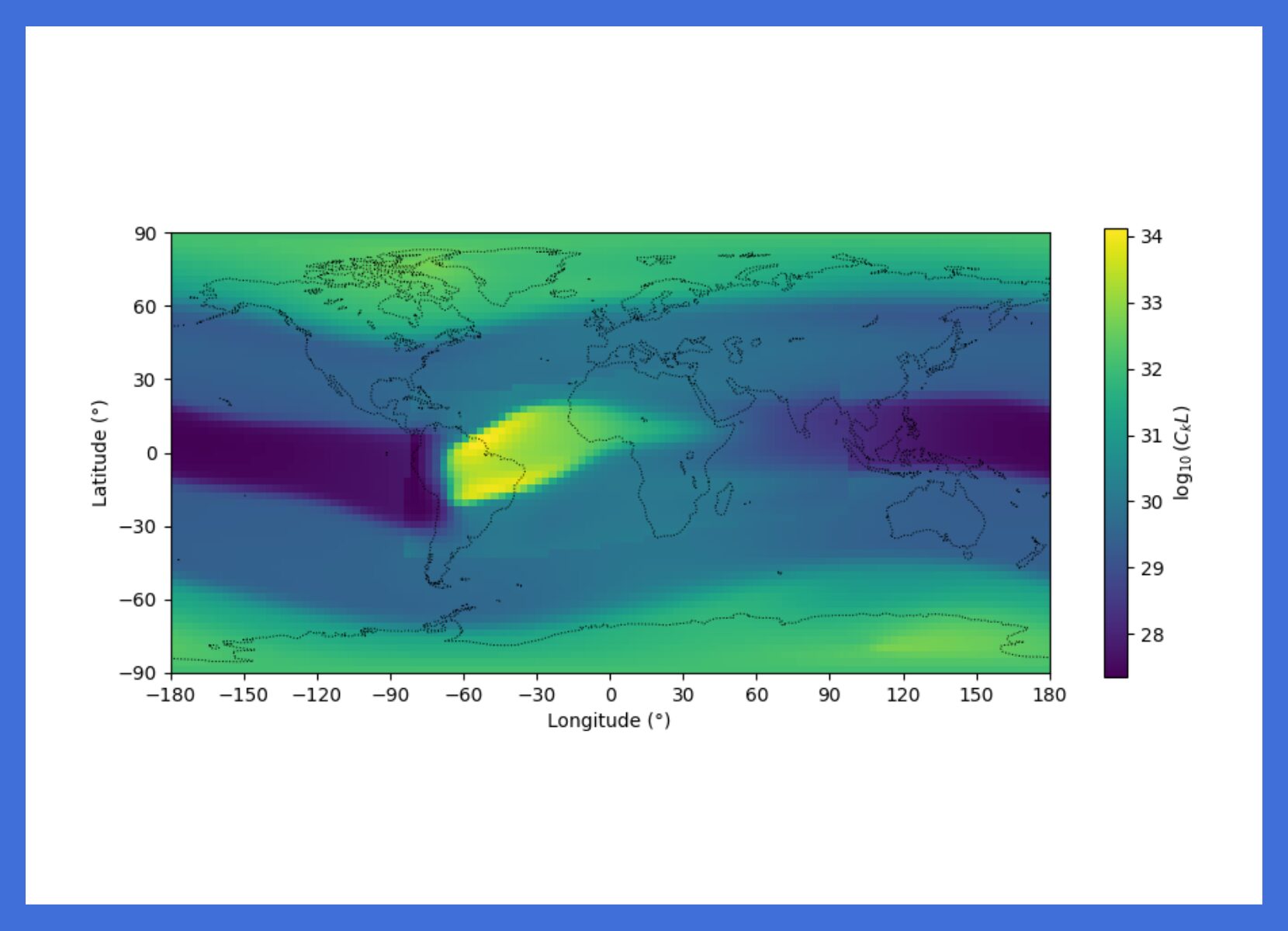A key tool for simulating ionospheric scintillation in low-Earth-orbit positioning satellites is released
• Low Earth orbit positioning satellites improve GNSS coverage in environments such as cities with skyscrapers or inside buildings
• Despite their advantages, these satellites are more sensitive to ionospheric disturbances, which can distort their signals
• The tool, called IonoSciNN, has been developed by IEEC researchers at UPC

A team from the Institute of Space Studies of Catalonia (IEEC), in collaboration with researchers from the Universitat Politècnica de Catalunya · BarcelonaTech (UPC), has developed a software tool that allows the simulation of how the ionosphere affects satellite signals.
This tool, called IonoSciNN, is particularly relevant for future Positioning, Navigation, and Timing (PNT) systems in low Earth orbit (LEO), known as LEO-PNT systems. In this way, it will complement the traditional Global Navigation Satellite System (GNSS), but from lower orbits: up to 1,000 km altitude.
LEO-PNT constellations offer several advantages. Among others, their proximity to Earth means signals arrive with greater strength and lower delay, improving coverage in challenging environments such as cities with skyscrapers or building interiors, thus making them a complementary system for positioning and navigation services.
Despite these benefits, LEO-PNT satellites face new challenges related to ionospheric impact. The ionosphere is the layer of the atmosphere located mainly between 100 and 600 km. These satellites will transmit at frequencies presumably lower than GNSS, and their speed relative to the ionosphere will be much higher.
These two conditions adversely affect the ionospheric disturbances of the signal received from the satellite, particularly ionospheric scintillation: the rapid apparent changes in the phase and intensity of signals as they cross the ionosphere, similar to how stars “twinkle” when observed through the atmosphere.
To address these effects, researchers from UPC and members of the IEEC, Carlos Molina and Adriano Camps, have developed the tool IonoSciNN as part of the INTREPID project (IoNospheric propagaTion foR LEO Positioning navIgation anD timing). IonoSciNN uses neural networks to calculate the scintillation parameters required as inputs for the Rino model. According to this model, ionospheric fluctuations can be simulated using a stochastic and turbulent distribution that incorporates a phase change on one or more screens located at the height of the ionosphere’s maximum electron density.
IonoSciNN has been developed in Python and is accessible as an open web application, allowing any user to obtain simulation data to anticipate how the ionosphere will affect satellite signals.
More information
This research is presented in the article “An Improved Neural-Network to Estimate the Inputs of Rino’s Ionospheric Scintillation Model” by C. Molina and A. Camps, published in the IEEE Journal of Selected Topics in Applied Earth Observations and Remote Sensing (JSTARS).
Contacts
IEEC Communication Office
Castelldefels, Barcelona
E-mail: comunicacio@ieec.cat
Lead Researcher at the IEEC
Carlos Molina
Institute of Space Studies of Catalonia (IEEC)
Space Science and Technology Research Group – CTE (UPC)
E-mail: molina@ieec.cat
About the IEEC
The Institute of Space Studies of Catalonia (IEEC — Institut d’Estudis Espacials de Catalunya) promotes and coordinates space research and technology development in Catalonia for the benefit of society. IEEC fosters collaborations both locally and worldwide and is an efficient agent of knowledge, innovation and technology transfer. As a result of more than 25 years of high-quality research, done in collaboration with major international organisations, IEEC ranks among the best international research centres, focusing on areas such as: astrophysics, cosmology, planetary science, and Earth Observation. IEEC’s engineering division develops instrumentation for ground- and space-based projects, and has extensive experience in working with private or public organisations from the aerospace and other innovation sectors.
The IEEC is a non-profit public sector foundation that was established in February 1996. It has a Board of Trustees composed of the Generalitat de Catalunya, Universitat de Barcelona (UB), Universitat Autònoma de Barcelona (UAB), Universitat Politècnica de Catalunya · BarcelonaTech (UPC), and the Spanish Research Council (CSIC). The IEEC is also a CERCA centre.
